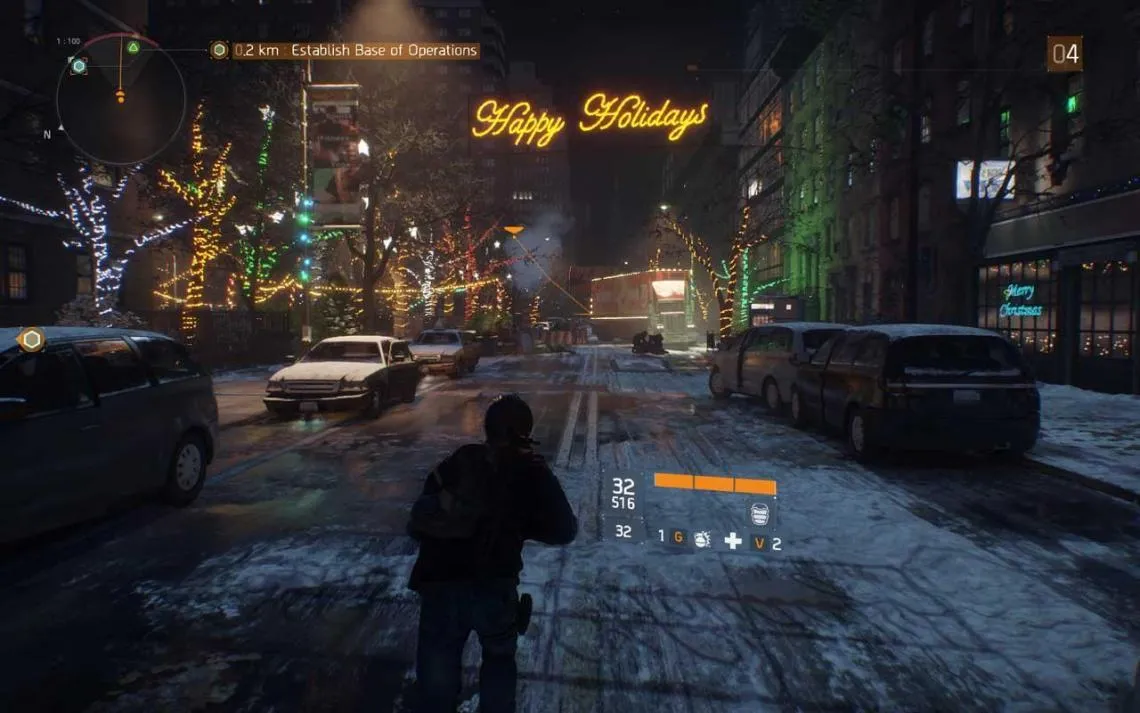
Tom Clancy’s The Division: A Post-Pandemic New York
Contents
The gaming landscape has shifted. Ubisoft, once renowned for innovative titles and high-quality sequels, has faced criticism for annual releases and over-hyped marketing. From the over-milking of the Assassin’s Creed franchise to the iterative nature of Far Cry, recent releases like The Crew and Watch Dogs have fallen short of expectations. With the launch of Tom Clancy’s The Division, players hoped for a return to form. Delayed multiple times, the game promised much. Did The Division deliver on its potential, or did it succumb to the same pitfalls as its predecessors?
 alt text: A snowy street in The Division's post-pandemic New York, abandoned cars and debris littering the scene.
alt text: A snowy street in The Division's post-pandemic New York, abandoned cars and debris littering the scene.
A City Under Siege: Exploring Post-Pandemic New York
The premise is familiar: a virus ravages society, plunging civilization into chaos. In The Division, a weaponized virus spread via contaminated currency unleashes pandemonium on Black Friday, crippling the United States. As an agent of the Strategic Homeland Division (SHD), or simply “The Division,” you are tasked with restoring order to a devastated New York City. While the narrative isn’t groundbreaking, the depiction of a snow-covered, deserted New York is captivating. The game masterfully contrasts the city’s iconic landmarks with the stark reality of its collapse.
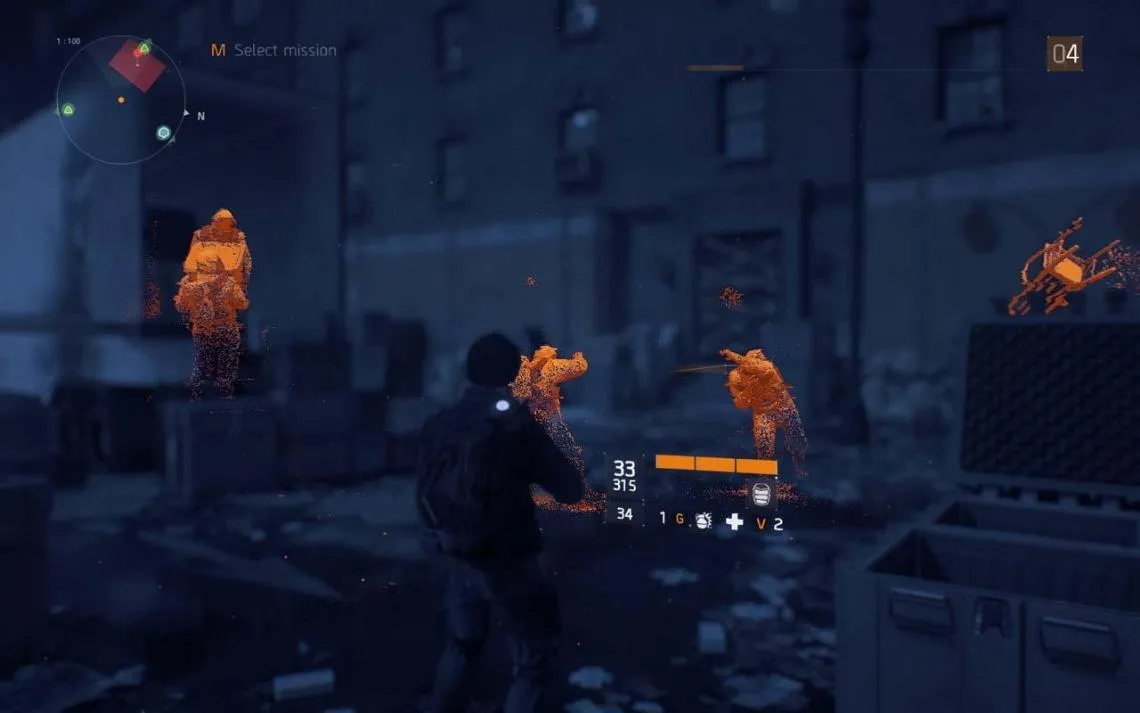 alt text: A view down a deserted street in The Division, showing the level of detail in the environment and the desolate atmosphere.
alt text: A view down a deserted street in The Division, showing the level of detail in the environment and the desolate atmosphere.
From abandoned vehicles to festive decorations left untouched, the environment tells a story of a city frozen in time. Scattered evidence, echoes of past conversations, and glimpses of frightened survivors paint a vivid picture of the crisis. The game’s visual fidelity brings this post-pandemic world to life, showcasing the desolate beauty of a once-vibrant metropolis. Your actions as an agent fill the void left by the city’s inhabitants, restoring a sense of purpose to a world teetering on the brink.
Blending RPG and Shooter Mechanics
The Division seamlessly blends RPG and third-person shooter elements. The RPG system allows for extensive customization of weapons, armor, and gear. The intuitive interface makes it easy to compare stats and equip your agent with the best loadout. The loot system, reminiscent of classic RPGs like Diablo, encourages exploration and rewards players with a constant stream of new equipment. The color-coded rarity system adds another layer of depth, making every loot drop exciting.
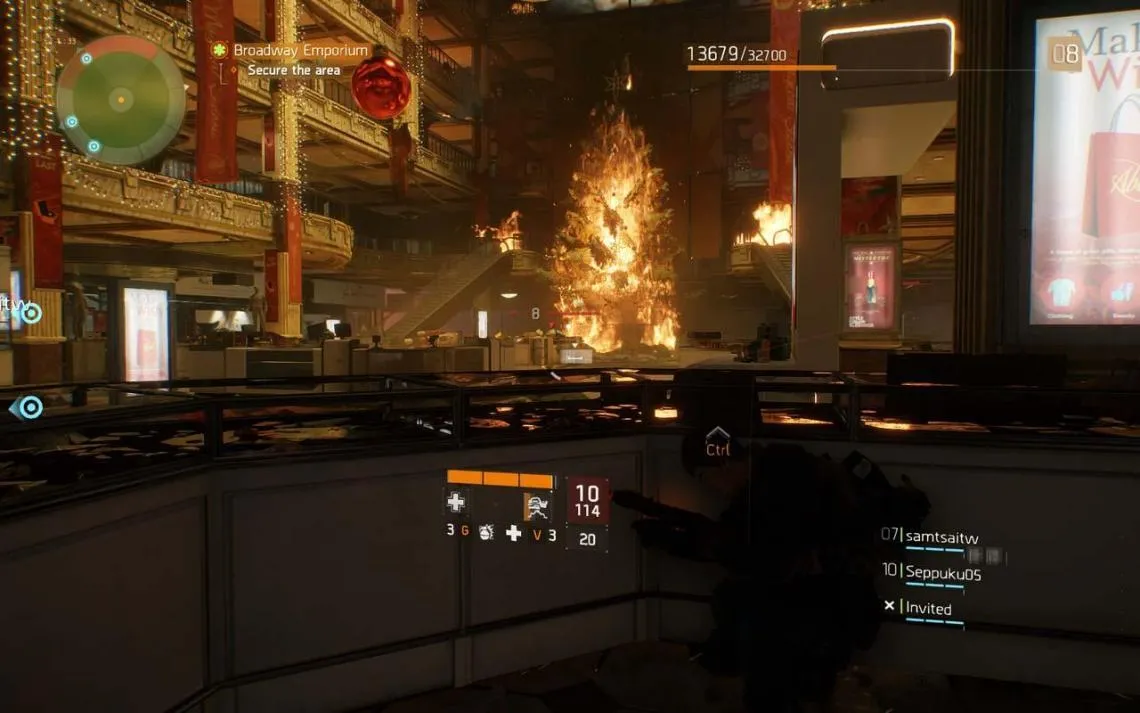 alt text: Character customization screen in The Division, showcasing the various gear options and their statistics.
alt text: Character customization screen in The Division, showcasing the various gear options and their statistics.
The game features three skill trees: Security, Tech, and Medical. Each tree offers a unique set of abilities, ranging from defensive tactics to offensive gadgets and healing support. Unlocking skills and perks is tied to upgrading your base of operations, encouraging strategic gameplay. While the upgrade system is relatively straightforward, it lacks the depth that could have made skill choices more impactful.
The shooting mechanics are solid, offering a satisfying sense of weight and impact. The cover system, while functional, occasionally suffers from clunky controls. The weapon customization system, while not as detailed as some dedicated shooters, adds a welcome layer of personalization. The enemy AI, though predictable at times, provides a sufficient challenge, especially at higher difficulty levels.
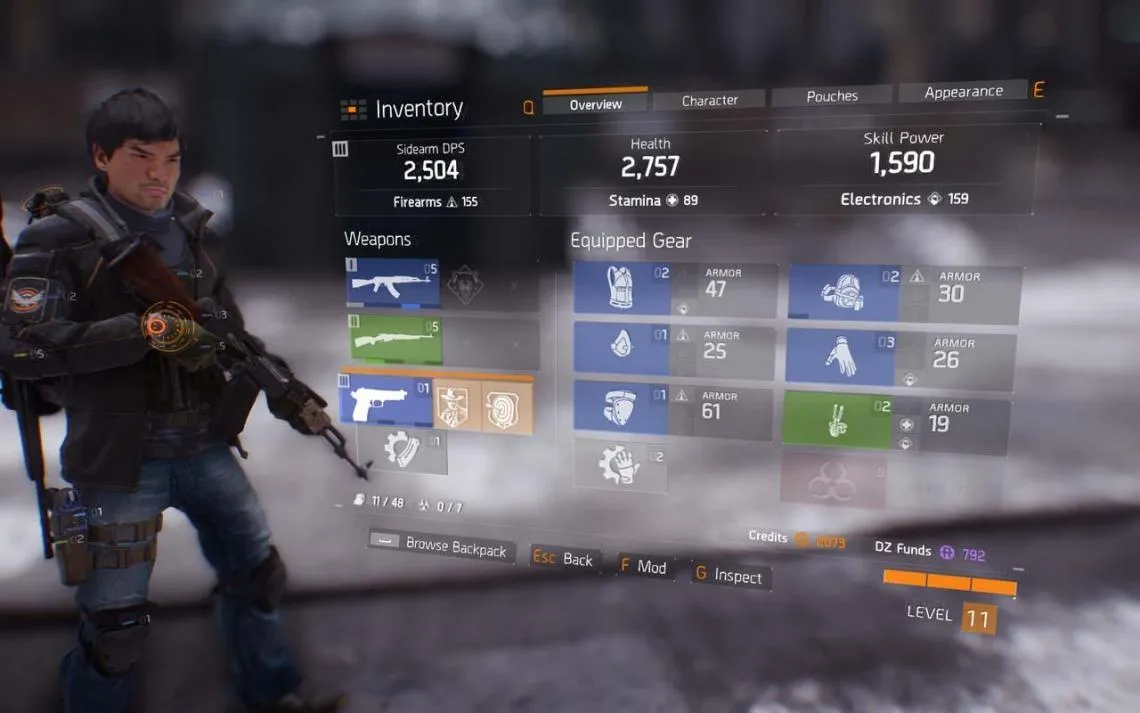 alt text: The Division gameplay, showing the player character in cover during a firefight in a snowy urban environment.
alt text: The Division gameplay, showing the player character in cover during a firefight in a snowy urban environment.
Seamless Multiplayer Integration
The Division excels at blurring the lines between single-player and multiplayer. Joining a team is seamless, whether playing with friends or matchmaking with strangers. The game adapts to your play style, offering a consistent experience regardless of your group composition. The Dark Zone, a PvPvE area in the heart of Manhattan, is where the game’s multiplayer integration truly shines.
The Dark Zone: A High-Risk, High-Reward Playground
The Dark Zone is a lawless area where players can team up to extract valuable loot. The risk of betrayal adds a thrilling layer of tension. Going rogue by attacking other players offers even greater rewards but marks you as a target for everyone else. The escalating rogue system and the ever-present threat of betrayal create a dynamic and unpredictable environment.
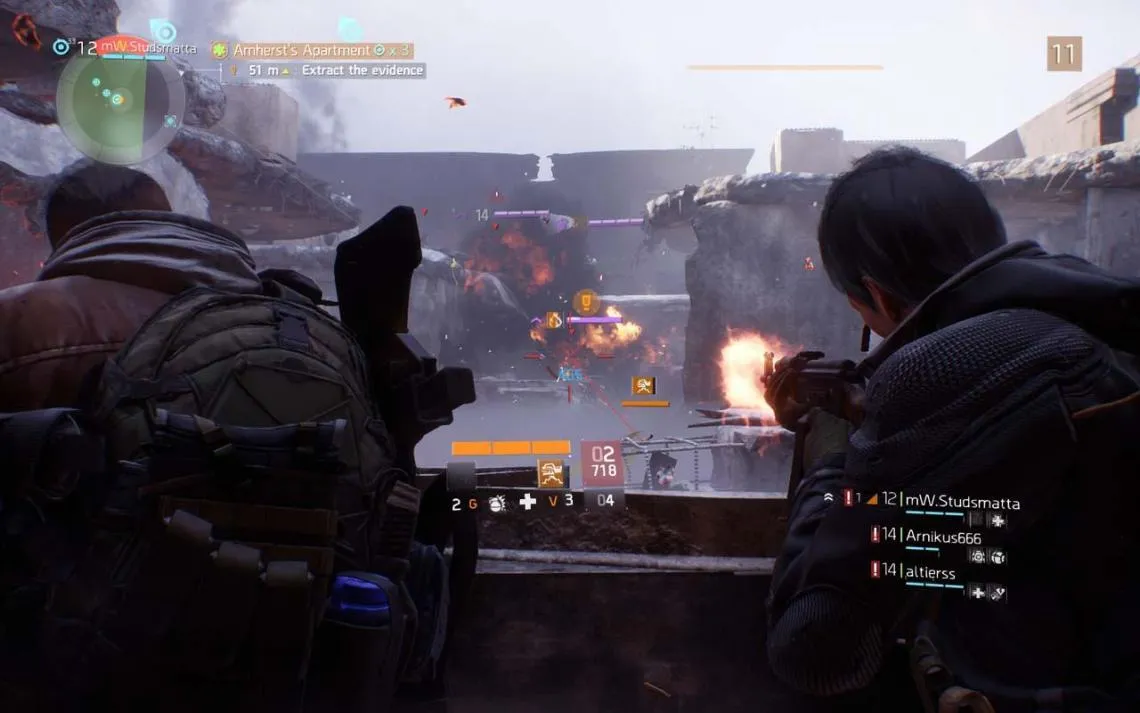 alt text: Gameplay in The Division's Dark Zone, showing player characters engaging in PvP combat.
alt text: Gameplay in The Division's Dark Zone, showing player characters engaging in PvP combat.
Repetitive Missions and Downgraded Graphics
Despite its strengths, The Division suffers from repetitive mission design. While the main story missions offer a linear progression, the side missions often feel formulaic. The enemy variety is limited, and the combat encounters can become predictable. The game’s graphics, while impressive, don’t quite live up to the visuals showcased in early trailers. The downgraded textures and reduced environmental detail are noticeable, especially for those who followed the game’s development closely.
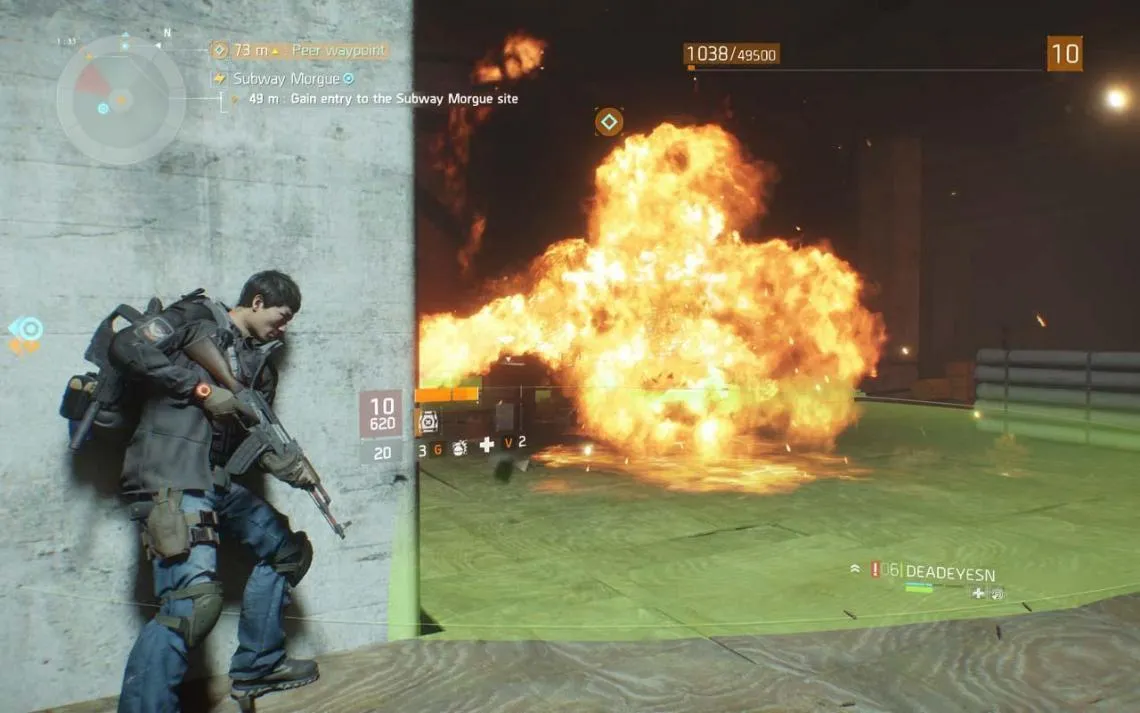 alt text: The player character aiming down the sights of their weapon in The Division, highlighting the game's first-person shooting perspective.
alt text: The player character aiming down the sights of their weapon in The Division, highlighting the game's first-person shooting perspective.
Conclusion: A Solid Foundation with Room for Improvement
The Division offers a compelling blend of RPG and shooter mechanics, a captivating post-pandemic world, and seamless multiplayer integration. However, the repetitive missions and downgraded graphics hold it back from its full potential. While the game ultimately delivers a solid experience, it falls short of the revolutionary title it once promised.





Comments (0)